This post may contain affiliate links which may generate a small commission from clicks that result in a purchase.
Depending on the olive variety you choose, some olive trees are self-pollinating and some require a pollinator. Self-pollinating olive trees include Arbequina, Koroneiki, Fantoio, Coratina, Picual; whereas olive trees that require pollinators include Manzallino, Mission, Sevillano.
Olive trees requiring a pollinator may seem like additional work, however, cross-pollination generally improves the fruit set especially when environmental conditions are not optimal. Even so, if it is a self-fruitful olive cultivar, it increases flowers and fruit development by cross-pollination.
In this article, you will find relevant information about self-pollinating olive trees, varieties requiring cross-pollination, and an olive tree pollination chart.
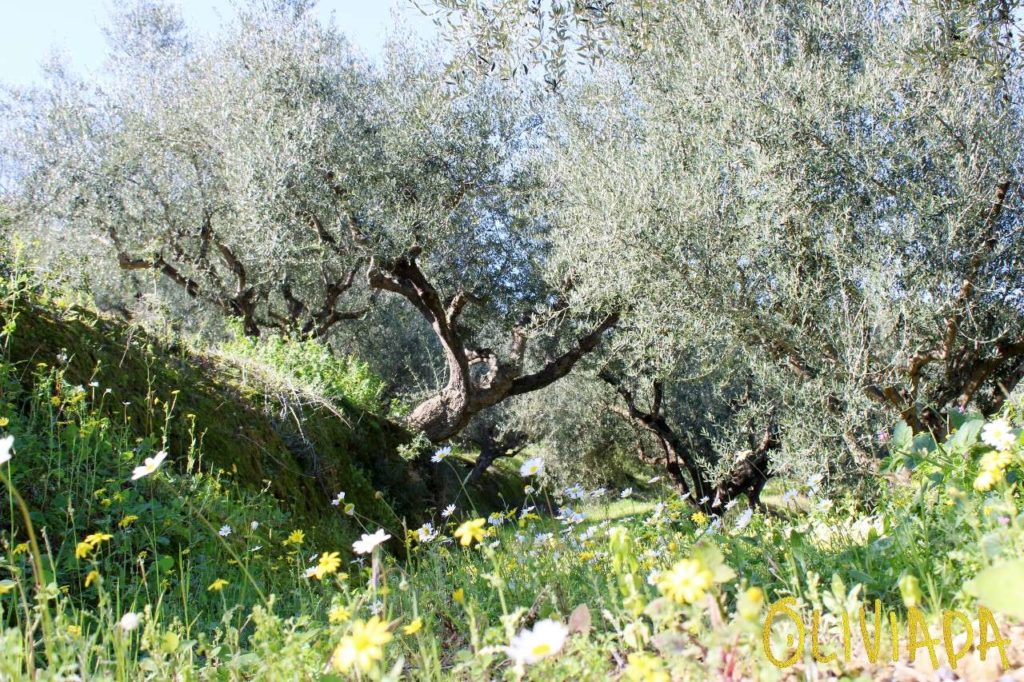
Self vs Cross-pollinating Olive Trees
Self-pollinating or self-fruitful or self-fertile olive trees
They do not need other olive varieties to grow next by, a single olive tree is pollinated by the wind or bees. As a result, will bear the olive fruits all by itself.
Therefore to obtain a maximum olive yield, it is necessary to associate self-fertile varieties with others that are also good pollinizers. For example, self-pollinating olive trees can benefit from cross-pollination that can increase their yields by more than 10%.
Cross-pollinating or self-unfruitful olive trees
They need another tree or sometimes two other trees for complete pollination. They should not be the same variety, but a different olive tree variety.
Generally having 2 or more different compatible varieties growing in close proximity 100 feet (30 meters) will facilitate adequate cross-pollination.
Good thing, when olive trees are cross-pollinated (even if it is unnecessary) you benefit from a higher probability of pollination, bigger fruits, and a higher crop yield of 10% or even more.
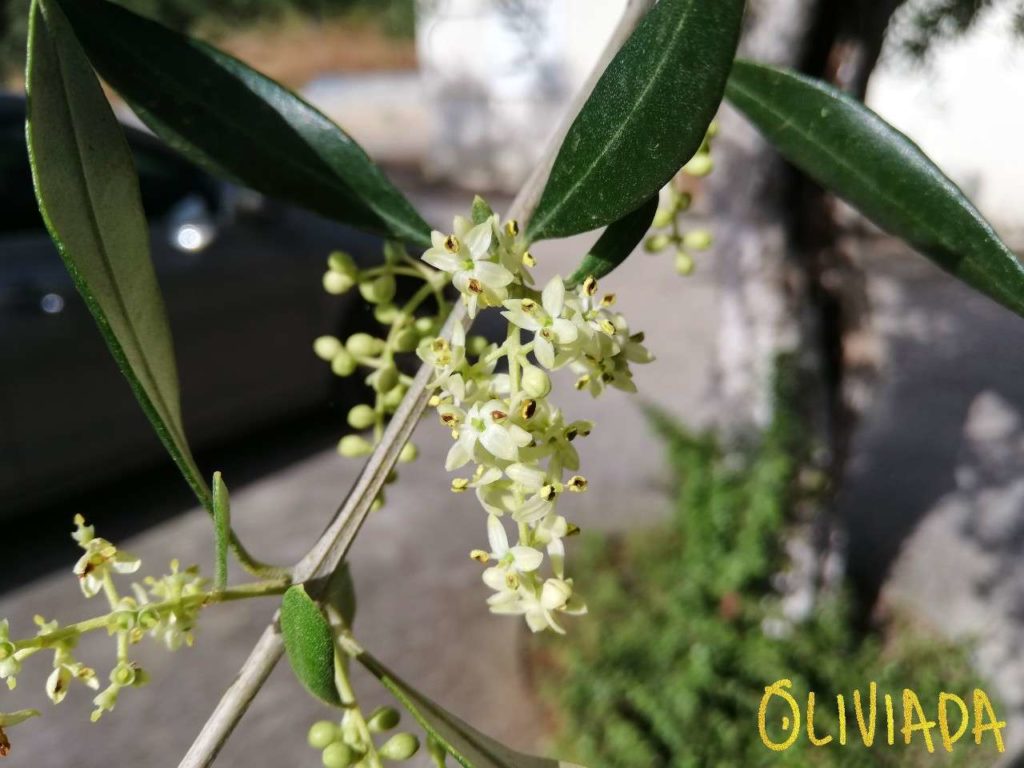
For example, the Manzanillo olive tree may be best pollinated by a Sevillano or Barouni olive variety in order to get heavy crops. Though Ascalono and Mission could also pollinate Manzanillo but with lesser results in crop yield. Also, they all have to blossom at about the same time.
Also, the presence of an occasional Manzanillo tree will increase the yields in a Sevillano orchard. For this reason, olive tree growers plant several rows of Sevillano and then a row of Manzanillo to achieve a heavier crop.
Italian origin Frantoio cultivar cross-pollinated with occasional Pendulina cultivar may increase crops by up to 10%. It is sufficient to plant only 5 – 10% of the total orchard’s trees as Pendulina for successful cross-pollination.
| Self-pollinating Olive Tree Variety | Origin Country |
|---|---|
| Amfissa | Greece |
| Arbequina | Spain |
| Barnea | Israel |
| Bosana | Italy |
| Coratina | Italy, Croatia |
| Cornicabra | Spain |
| Frontoio | Italy |
| Hojiblanca | Spain |
| Kalamon | Greece |
| Koroneiki | Greece |
| Picholine | France |
| Picual | Spain |
| Sevillano | Spain, California |
When & How Olive Tree is Pollinated?
The olive tree pollination happens in spring when the trees blossom. Though olive trees can not pollinate with other unrelated species such as citrus, they can only pollinate with other olive cultivars.
Pollen from the anthers (the male part of the olive tree flower) has to be transferred to the stigma (the female part of the olive tree flower). Only if the olive tree flower is pollinated successfully, the flower is fertilized and the olive fruit process begins. Else, an olive flower is blooming, but not fruiting afterward.
When it comes to olive pollination, there are few different sources that olive flowers can be pollinated from:
- Pollinators (like bees and birds)
- Wind
- Manually (by person)
Pollen wind role is very important to not only spread and diffuse pollen grains but also transfer them fast to reach stigma before they lose their viability.
Pollinating insects feed on the nectar inside olive flowers and accidentally collect some pollen on their bodies. Then continuing to visit more flowers, the pollen from the previous flower will rub off and pollinate the current olive flower.
Manual pollination for your olive trees can be done with a small paintbrush, toothbrush, or cotton swab. Simply brush over the small olive flowers gently. As you move flower to flower, they will exchange pollen and start developing olive fruit. This is especially helpful for cross-pollinating olive trees that are grown individually in the garden or ones grown indoors.
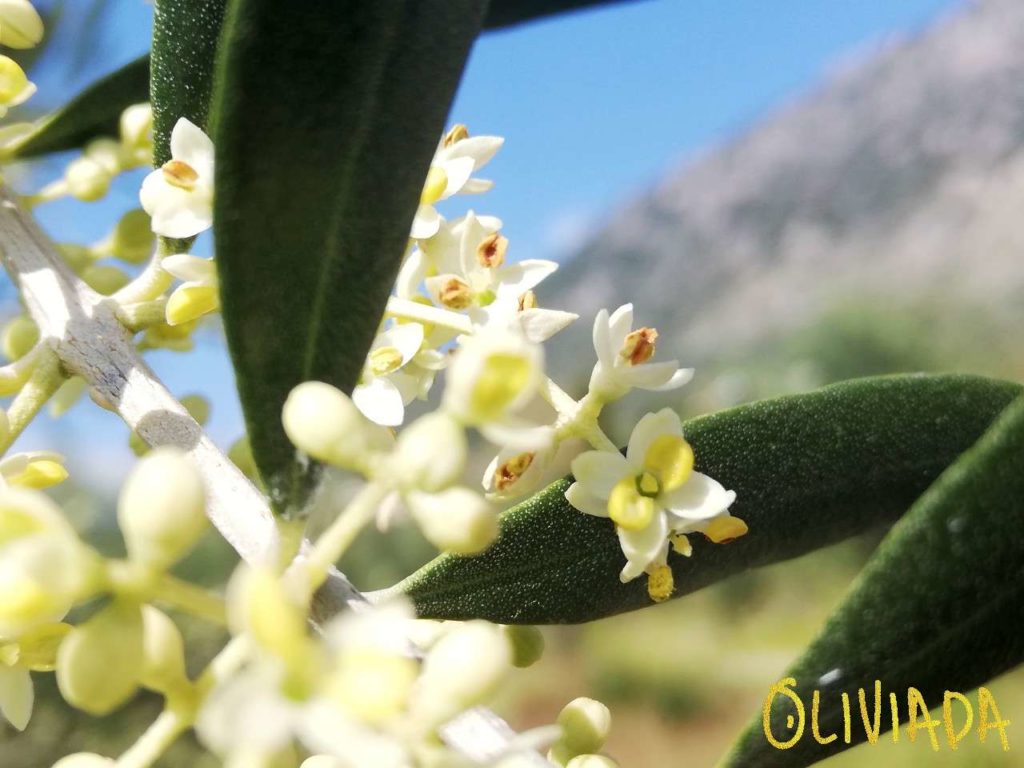
Also, if an olive tree flowers do well in spring and do not set any fruit afterward, it may be an indicator that your tree needs a cross-pollination with a cross-compatible olive cultivar.
Read more about olive tree flowers and
Why My Olive Tree Is Not Pollinated?
There are multiple factors that can interfere with pollination. Let’s look into several of them:
Olive variety compatibility
If your olive tree is cross-pollinating, you should ensure to plant other varieties compatible with your own variety. Also, they all have to blossom at about the same time.
For example, Frantoio and Koroneiki olive trees are not compatible with each other. Similarly, Manzanillo and Mission trees are not compatible with each other.
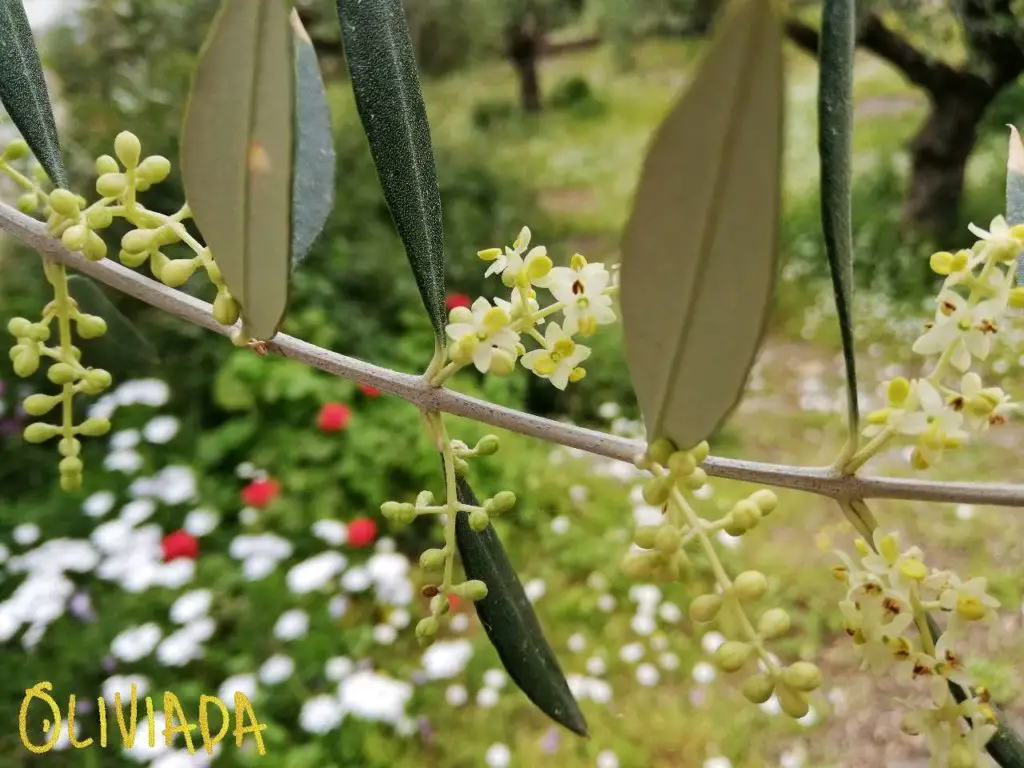
Environment conditions
Lack of rain or too much rain; high or hot dry winds; spring frost can damage flower buds before they blossom or can be detrimental to pollination during the flowering season.
Also, excessive winter cold or even late-spring frost can kill flower buds and blossoms. For this reason, it is important to choose the right olive tree variety for your climate zone.
For more information read our article on where do olive trees grow best.
Different Length of Blooming
The different length of blooming when olive flowers get pollinated depends on variable environmental conditions such as temperatures and rains.
For example, the blooming period may be short due to high temperatures with a lower possibility of cross-pollination. It can start early in spring since thermic conditions are favorable but end up when heavy rains start. Another scenario for a longer blooming period is mild temperatures and frequent but low rains.
Pests and Diseases
Pest and diseases can be problems for olive flowering and pollination. Not treated olive trees on time may end up losing all flowers and fruit sets.
Fertilize prior Pollination
Prior to the spring olive flower and fruit developing season, feed your olive tree with nitrogen and potassium for better crop results. Use only organic fertilizers and natural pesticides if needed.
If you are not sure about the soil condition, it is recommended to test your soil at least once in 2 years in order to ensure relevant nutrition for your olive trees.
Olive Tree Pollination Chart
The dynamics of compatibility in olive varieties are somewhat complex, and many varieties even self-compatible require cross-pollination for a better fruit set.
This is not an exhaustive olive tree pollination chart with main varieties used for cross-pollination:
Under optimal weather conditions at the flowering season with cross pollinators, you can achieve maximum crop yield results.
Final Thoughts
When you are searching for an olive tree ready to plant in small spaces, consider self-pollinating olive trees varieties in order to enjoy olive harvest every autumn. In case you have the opportunity to plant several olive trees, pick compatible varieties and improve crop yield.
About the inter-compatible olive cultivars the best to discuss with a local agronomist or local farmer cause it depends on overlapping factors such as blooming, pollen compatibility, and environmental conditions. Knowledge on self(in)compatibility is important for the olive tree growers to allow them to better manage newly introduced cultivars in their orchards and for choosing suitable pollinators among the local olive cultivars.
Also, if you have space for other trees to cross-pollinate your olive tree and get a higher crop yield. For example, olive trees should be spaced between 6 feet (2 meters) for a high-density grove or 18 feet (5 meters) for a traditional grove.
Plant the olive tree where fallen fruit won’t cause a problem – away from decks, driveways, and walkways. Otherwise, get a fruitless olive tree or learn 5 ways to remove olive stains from concrete on pathways.
Sources
Olive bloom and pollination by University of California
Cross-pollination in olive cultivars – RIRDC publication
Self-incompatibility and pollination relationships for four Greek olive cultivars
Self-sterility and cross-pollination responses of 9 cultivars in Central Italy
Read Next
Learn More
Hi, I’m Vangelis Kleftogiannis, the founder of Oliviada and an established olive oil expert from Kalamata, Greece. My expertise isn’t just in producing quality Extra Virgin Olive Oil, but also in the cultivation and care of olive trees themselves. I am deeply committed to sharing my knowledge and know-how, helping others understand the intricacies of olive tree growing and the creation of quality olive oil.
Are You Looking to Buy an Olive Tree?
If you are looking to add more potted trees or other plants to your orchard, or if you like to replace a neglected olive tree, the best places to get them are your local nursery or an online nursery.
One of the most reliable and the world's largest online nurseries is Fast Growing Trees. They deliver fast, neat, and healthy plants backed with a 30-day guarantee.

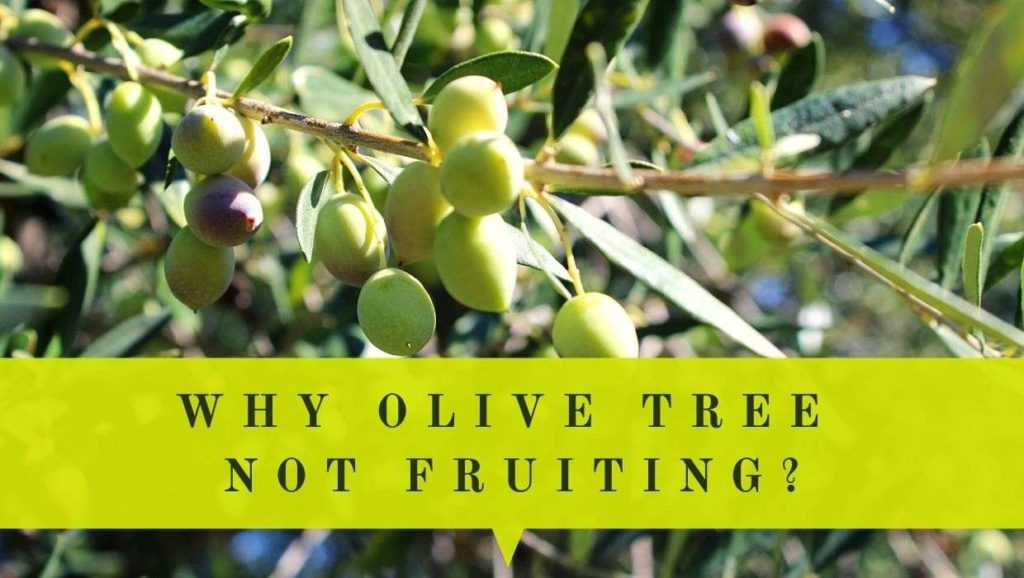
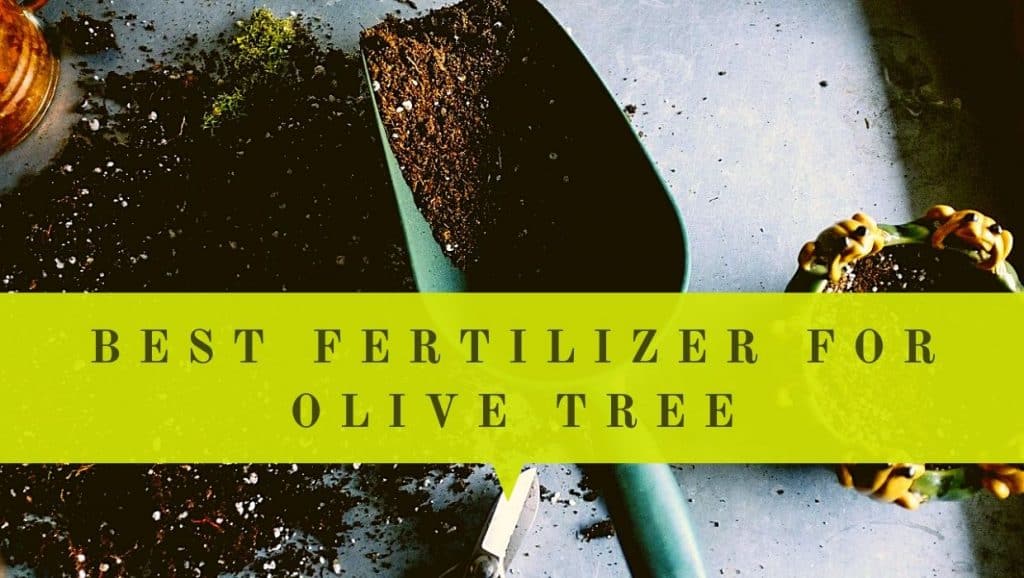
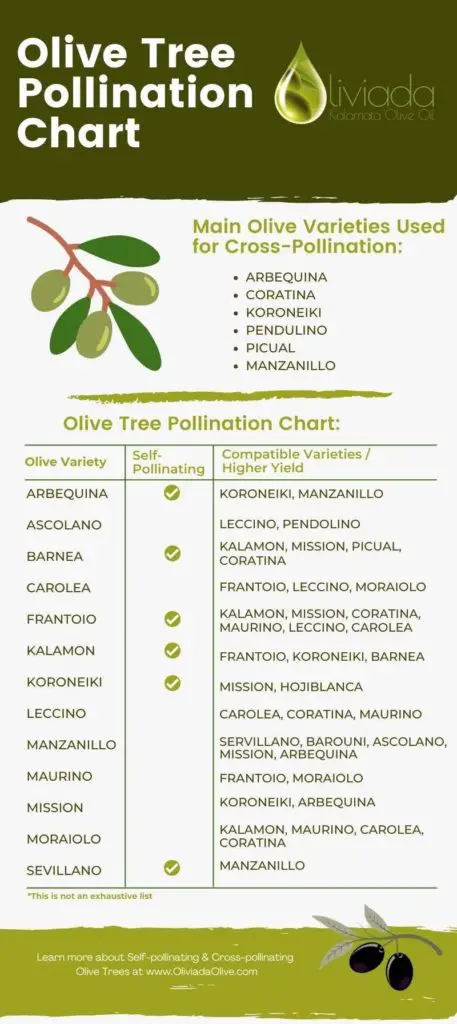
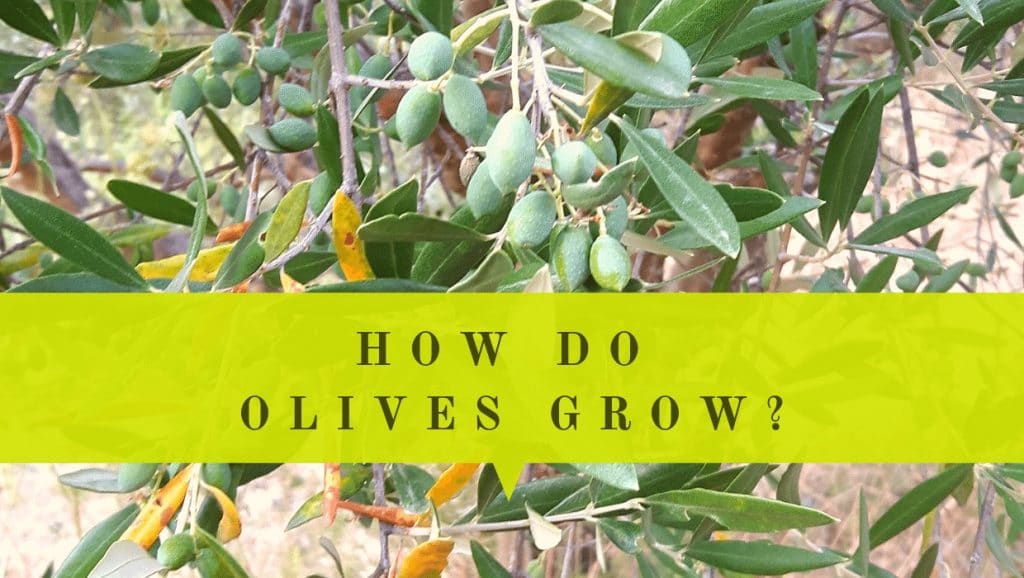

Hello,
I have three 30 year old olive trees that flower heavily and set tiny fruits but all drop off. I only get a handful of full side olives. I suspect I need a pollinator but I have little idea of the variety which I am growing. What do you suggest?
Hi Max, if you are not sure about your olive tree variety, next spring try several different olive pollinators such as Koroneiki, Fantoio, Pendolino, or Maurino. There is no need to plant all these varieties in your garden, you can experiment and pollinate your tree mechanically by applying other tree pollens on the blooms of your olive tree (in simple way, foreign tree pollens can be picked in a plastic bag and this bag applied on the blooming branch of your tree). Also, i have article about the reasons why olive tree not fruiting – you can search for it in “search box” on my website.
In raining area,how to ensure enough fruit set?which variety may perform well?Thank you。
Hello, olive trees prefer dry soil rather than too moist soil. They need great drainage, lots of sun, hot summers, and cool dry winters (dormant season) to be able to set fruits. So if the location you live in has similar conditions, you can grow various olive varieties.
I have some 3 yr old Mission and Manzanilla in pots but not sure which is which. How can I tell which variety they are for cross pollination? Also have Aberquina and Leccino, buying some Cortina for the leccino, thanks for the chart!
Hi Dave, Mission and Manzanilla are very similar olive cultivars but could be identified by observing olive fruits and leaves. In case it is hard to identify which is which, use both olive trees for cross-pollination. Science say the more olive varieties are used for cross-pollination the better production results expected.